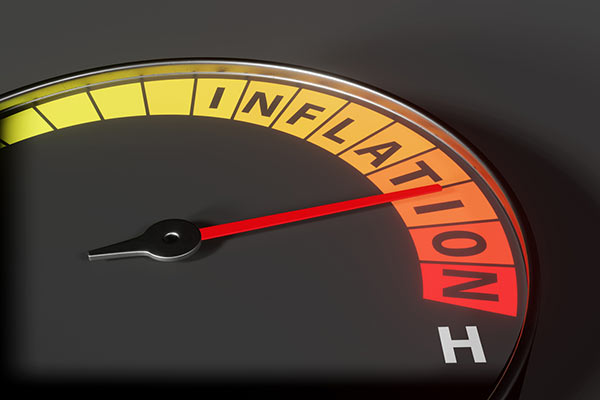The biggest risks keeping fund managers awake at night
Various fund managers are unsettled by the disconnect between current relatively calm waters for markets and the numerous potential economic dangers lurking just below the surface.
3rd September 2025 09:30
by Faith Glasgow from interactive investor

As an outsider, it’s easy to imagine that being responsible for large amounts of other people’s money is enough to guarantee a whole career of largely sleepless nights. That’s particularly so given the current backdrop of major geopolitical unrest in Europe and the Middle East, plus US President Donald Trump’s highly unpredictable policymaking.
But professional fund managers have to look beyond the macroeconomic headlines in trying to assess the biggest risks to economic prosperity, consumer confidence and investor sentiment.
- Our Services: SIPP Account | Stocks & Shares ISA | See all Investment Accounts
We therefore asked a wide range of investment managers what’s troubling them most about today’s economic and market conditions. Their answers were, of course, wide-ranging, but there were powerful and closely interwoven threads running through, so we have tried to group them by those key themes.
Market complacency
Several commentators focused on the fact that in the face of pervasive global macroeconomic and geopolitical uncertainty, markets don’t appear to be worrying about anything at all.
As Mike Riddell, portfolio manager of Fidelity Strategic Bond fund, points out: “It's normally the ‘unknown unknowns’ that cause the biggest market moves, because they are by definition ‘shocks’. But so little risk of anything going wrong is priced in that, frankly, any negative outcome, anywhere, could cause an outsized negative market move.”
Craig Baker, chair of Alliance Witan Ord (LSE:ALW)’s investment committee, agrees that there is excessive complacency. “US equities are hitting new record highs almost daily, and volatility (VIX) is at a year-to-date low, despite core inflation trending upwards and likely to be pushed higher by the slow burn impact of tariffs, which, despite numerous deals, are still much higher in aggregate than before President Trump’s inauguration,” he adds.
For Paul O’Neill, chief investment officer at Bentley Reid, the current situation recalls a quote by Citigroup chief executive Chuck Prince in 2007 as the global financial crisis hovered on the horizon: “As long as the music is playing, you’ve got to get up and dance. We’re still dancing.”
O’Neill sees echoes of that at the moment, “with an artificial intelligence (AI) tide that is lifting all boats and a growing number of otherwise struggling companies seeing their share prices soar when they adopt a ‘bitcoin treasury’policy.
“If the sell-off occurs at the same time as AI demand turns out to have been a mirage, leaving huge sums of capital investment to be written down in value, that would certainly keep me awake,” he adds.
Similar complacency has been evident in the UK fixed-income world, says Bryn Jones, head of fixed income at Rathbones. “Credit spreads have kept grinding tighter, given strong investor demand for credit and the usual holiday season dip in new issuance,” he reports.
- Stock pickers strike back as value investing returns
- Sign up to our free newsletter for investment ideas, latest news and award-winning analysis
Credit spreads are the difference between the yields of two bonds that mature at the same time but are rated at different credit qualities by ratings agencies, such as Standard & Poor’s, Moody’s and Fitch. Different ratings providers have different systems – AAA (the highest degree of creditworthiness) to C (the lowest degree of creditworthiness), for example.
Jones points out: “When spreads get this tight, they can’t tighten much more. But they can widen a lot if anything goes wrong. What happens from here largely depends on the economy. We’re keeping a very close eye on three ‘pillars’ that we believe have been propping it up: household savings, employment, and real income growth. And each one has been getting wobblier.”
A ‘reverse Berlin Wall’ moment?
James Harries, co-manager of STS Global Income & Growth Trust Ord (LSE:STS) (who recently appeared on ii’s On The Money podcast), views the current situation as the unravelling of three decades-plus of globalisation. As he explains, following the fall of the Iron Curtain, the global economy went through a very benign period of cheap labour and falling borrowing costs.
“Globalisation went into overdrive, which allowed companies to optimise their cost base and countries their comparative advantage.” Now, it’s all starting to reverse, resulting in “a less benign, less secure, less global, more inflationary backdrop”.
Worse still, it’s happening at a time when the US market is very highly valued and extremely concentrated in those AI-driven tech giants: economic wobbles could have dire consequences.
Market composition
On a related note, Mark Dunley-Owen, manager of Orbis OEIC Global Balanced fund, is worried about investors’ continuing love affair with the US markets.
He says: “The US is exceptional, but not to the extent implied by markets. Similarly, are markets prepared for long yields rising instead of falling, or US government debt losing its risk-free status? I don’t think so.”
- Is your global fund really a play on the US?
- Beyond the US: fund ideas for other regions that stand out
- The tech funds that have actually beaten the Nasdaq
John Lamb, equity investment director at Capital Group, is concerned about the challenges of actually reading markets at present: is the recent shift in sectors and markets driving returns merely a short-lived rotation?
“Persistent concentration in a small group of US tech giants, structural challenges in Europe and China, and the unknowns surrounding how AI investmentwill reshape market winners and losers are all dominant themes at present,” he observes.
That apparently intractable dominance of large caps in general and the tech giants in particular is also, understandably, a worry for Nish Patel, manager of The Global Smaller Companies Trust Ord (LSE:GSCT). Smaller companies fund managers have been facing ongoing structural headwinds for years, with little sign of a meaningful break despite the recent rotation.
Inflation
The US tariff regime is a natural precursor to rising prices across the pond and elsewhere; as Ben Seager-Scott, chief investment officer at Forvis Mazars, points out, these can have deeply detrimental consequences.
He says: “Inflation can be pretty insidious in undermining consumer and business confidence, particularly at a time when economic activity may be cooling. The UK, for example, faces a significant stagflation risk.”
Wage inflation is a further contributor to that trend, says Zehrid Osmani, manager of Franklin Global Trust Ord (LSE:FRGT). “It remains elevated, even if easing from higher levels, and tends to be the biggest contributor to inflation expectations in the medium term, so we foresee an ongoing sticky inflation outlook, exacerbated in the near term by the tariffs impact on US prices.”
The upshot is that central banks, notably the Federal Reserve, could be more restricted in the magnitude of their rate cuts, thereby risking disappointing equity markets.

Government debt levels, rising bond yields
Closely linked to inflationary threats, for many managers the high levels of government debt across many economies are a very big accident waiting to happen.
As Rob Burdett, head of multi-manager at Nedgroup Investments, notes, it’s not just a UK issue. “In the UK, government debit is above 100% of GDP. In the US, it is over 120% and in Japan well over 200%. These are levels unprecedented in peace time,” he warns.
“The problem is that the global financial crisis in 2008 was caused by debt in the Western banking system, and the resolution involved transferring that debt to the government. This debt has not been dealt with subsequently, in part due to further crises in the European Union in 2013 and, of course, Covid.
“Debt levels have in fact grown further, and now defence spending, an ageing population and other issues are further highlighting the problems governments, and by extension their populations, face.”
- UK bank shares and the impact of a Budget tax swoop
- Ian Cowie: despite tariffs I’m backing this long-term winner
In particular, elevated government debt raises the threat of increases in government bond yields as the government’s economic and fiscal credibility is called into question, making it even more expensive to service that debt. The UK had just such a dramatic episode in October 2022 under then prime minister Liz Truss.
Aegon chief investment officer Steven Jones offers a bleak gothic flashback to Truss’s brief but chaotic rule.
“It’s October 2022 again. The memory of gilt market chaos - triggered by unfunded tax cuts - haunts the corridors of Westminster and the Bank of England. The long-dated gilt beast stirred then, and it remembers. Now, with unfunded spending pledges mounting once more, it rises again.
“This summer, the monster creeps through the markets, visible yet ignored. But come autumn, it will not be quiet. It will roar. It will demand a price - not just in pounds, but in credibility. The UK’s reputation with international investors hangs in the balance. The cost of funding the government may become unbearable.”
Nor is Jones the only one with Truss at front of mind. As Julian Bishop, portfolio manager of the Brunner Ord (LSE:BUT) Trust, observes, the US too “could suffer a Liz Truss moment if the deficit is not tackled”.
He explains: “The high level of government debt in the US, the high fiscal deficit, and the lack of any plan to deal with it is an obvious worry. When debt affordability is called into question, investors quite rightly expect a higher interest rate to compensate for the risk that the debt is monetised.”
Overall, the angles taken by these managers may be diverse, but almost all are unsettled by the disconnect between current relatively calm waters for markets and the numerous potential economic dangers lurking just below the surface. Caution, it seems, is the name of the game.
These articles are provided for information purposes only. Occasionally, an opinion about whether to buy or sell a specific investment may be provided by third parties. The content is not intended to be a personal recommendation to buy or sell any financial instrument or product, or to adopt any investment strategy as it is not provided based on an assessment of your investing knowledge and experience, your financial situation or your investment objectives. The value of your investments, and the income derived from them, may go down as well as up. You may not get back all the money that you invest. The investments referred to in this article may not be suitable for all investors, and if in doubt, an investor should seek advice from a qualified investment adviser.
Full performance can be found on the company or index summary page on the interactive investor website. Simply click on the company's or index name highlighted in the article.